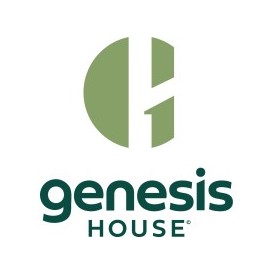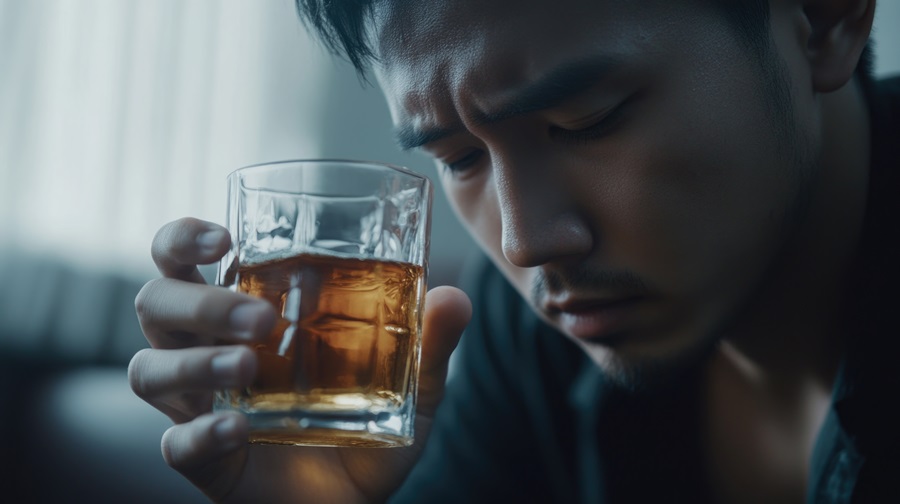When researching addiction treatment options, it’s common to encounter several different approaches to care. Two of the options you may debate are whether medication-assisted treatment (MAT) or abstinence-based treatment is the best option.
Both MAT and abstinence-based approaches are widely used and can be effective. The best option depends on individual needs and preferences.
We’ll provide a complete overview of medication-assisted treatment vs. abstinence-based treatment in the rest of this article. By the end, you’ll know the ins and outs of both addiction treatment approaches to feel confident about your choices when selecting care or attending a consultation.
What is MAT (Medication-Assisted Treatment)?
MAT is a treatment approach where FDA-approved medications are prescribed to reduce withdrawal symptoms and relapse risks.
Currently, MAT is most common for treating opioid use disorder (OUD) and alcohol use disorder (AUD) since those types of addictions have clinically proven medications available that can help.
The FDA-approved medications for OUD are buprenorphine, methadone, and naltrexone.
And the FDA-approved medications for AUD are acamprosate, disulfiram, and naltrexone.
MAT is an evidence-based approach to addiction treatment, with many studies pointing to its effectiveness. Alongside the FDA, many other major organizations approve of its use for addiction treatment, such as the World Health Organization (WHO) and the Substance Abuse and Mental Health Services Administration (SAMHSA).
MAT Should be Combined with Well-Rounded Treatment
When considering MAT, it’s important to note that this treatment approach involves more than just taking medications. It should be combined with a well-rounded treatment program that consists of behavioral therapy, support groups, and life skill building. Research from the Journal of Substance Abuse Treatment found that combining MAT with behavioral therapy leads to better treatment retention and outcomes.
How MAT Helps During Addiction Treatment
One of the main reasons why MAT is used when treating OUD and AUD is it helps manage withdrawal symptoms.
When someone uses a substance for an extended amount of time, their brain and body will become used to its effects, such as the drug’s ability to stimulate a large release of “feel-good” hormones like serotonin and dopamine. The brain often becomes accustomed to the drug causing large releases of those hormones and lowers its natural production of them.
Therefore, when someone suddenly stops taking the substance, they’ll likely feel off, run down, moody, or like they can’t function normally without it. Their body will also start to react with withdrawal symptoms like shaking, nausea, headaches, and strong cravings for the drug. Some withdrawal symptoms can even be severe like seizures or hallucinations.
MAT is used to reduce those withdrawal symptoms. For example, when someone receives MAT for opioid addiction with methadone, it’ll bind to the opioid receptors like other opioid drugs do, but it doesn’t stimulate them as strongly. Research has also shown that medications like methadone can block the euphoric effects of other opioid drugs like heroin or prescription painkillers.
Both of those effects will help someone ease off of opioids to lessen withdrawal symptoms compared to suddenly stopping altogether. Plus, it can help prevent relapse by blocking the effects of other opioids and reducing cravings.
What is Abstinence-Based Treatment?
The abstinence-based approach, also called non-medication addiction treatment, doesn’t involve any medications or substances when treating patients. Instead, it relies on therapy, support groups, and lifestyle changes during treatment.
This approach is often aligned with more traditional rehabs that aim to achieve complete sobriety as soon as possible. It often focuses on behavioral approaches to treatment, such as helping patients learn what behaviors contribute to addiction and building positive coping mechanisms and life skills that help.
Some people pursuing addiction treatment prefer an abstinence-based approach when they feel like getting all drugs out of their system early on will benefit their recovery.
Additionally, some drugs used during MAT have addictive potential. For instance, methadone and buprenorphine are less susceptible to abuse than other opioids like heroin, but some people could still become addicted to them. Therefore, if treatment professionals determine that a patient may struggle with medication management, an abstinence-based approach may be recommended instead.
Key Differences Between MAT and Abstinence-Based Models
As mentioned, the primary difference between MAT vs. abstinence-based treatment is MAT uses medication as a support tool and abstinence-based rehab is completely substance-free. Some other key differences include:
- Philosophy: The abstinence-based model focuses more on taking personal responsibility for managing addiction and making behavioral changes. On the other hand, MAT treats addiction as a medical addiction with a clinical approach to care and management.
- Treatment goals: The goal of abstinence-based care is to get patients substance-free as soon as possible. Conversely, MAT usually involves longer-term maintenance and tapering off of all substances over time as the patient attends therapy and works on building skills to manage their addiction.
- Relapse approach: MAT tends to treat relapse medically using medications to reduce the chances of relapse or prevent its dangers. The abstinence-based model sees relapse as part of the recovery journey but emphasizes prevention planning to reduce its likelihood.
- Support systems: MAT is usually performed in medical environments with clinical and behavioral health support. Abstinence-based approaches often involve more peer support, personal accountability, and taking actionable steps, such as in a 12-step program.
Pros and Cons of Each Approach
Both MAT and abstinence-based treatment have pros and cons.
Pros of MAT
Common benefits of MAT include:
- It helps reduce withdrawal symptoms, which can make beginning treatment feel more comfortable.
- It can reduce some of the dangers of relapse since medications can block the effects of other substances or reduce overdose risks.
- MAT typically takes place in a medical setting for a controlled and safe environment.
- Using MAT in well-rounded treatment programs improves treatment retention.
Cons of MAT
Some potential downsides of MAT are:
- Some of the medications used have the potential for addiction if they’re misused or abused.
- There can be a social stigma around MAT since patients are still using a substance at the beginning of treatment.
- Patients usually stay in a highly regulated medical environment which can feel off-putting to some.
Pros of Abstinence-Based Treatment
Common pros of abstinence-based treatment are:
- It encourages stopping substance use quickly.
- It promotes personal empowerment and behavioral change to maintain sobriety.
- Abstinence-based programs can feel more readily available since it’s a traditional approach that’s been around for a long time.
- You don’t have to jump through as many hoops to get started, such as extra medical evaluations that may be involved with MAT.
Cons of Abstinence-Based Treatment
Potential drawbacks of abstinence-based treatment are:
- Early withdrawal symptoms and cravings will be more intense.
- Programs can have higher drop-out rates.
- It requires more accountability early on to make behavioral changes necessary to maintain sobriety.
Choosing the Right Approach
There shouldn’t be a one-size-fits-all approach to addiction treatment. Both abstinence-based treatment and MAT can work. The right solution ultimately comes down to individual needs.
Consulting with an addiction rehab center is a good idea to determine which approach is right for your needs. Treatment professionals can help provide a diagnosis and will learn about your individual struggles and drug use history to help you find a plan that works best for you. We can help with this process at Genesis House.
How Genesis House Helps with Drug and Alcohol Addiction Treatment
You can overcome drug or alcohol addiction, and you don’t have to go through it alone. Genesis House is a drug and alcohol addiction treatment center that can assist each step of the way.
All of our treatment options, such as medical detox and residential care, can be tailored to your specific needs. When you complete a consultation with us, we’ll take the time to learn about you to select treatment options you’re comfortable with and that will provide a successful outcome, whether it’s medication-assisted or abstinence-based.
Contact us today to learn more about how Genesis House can support you or a loved one struggling with addiction.
References
- Center for Drug Evaluation and Research. “Information about Medications for Opioid Use Disorder (MOUD).” FDA, 2024, https://www.fda.gov/drugs/information-drug-class/information-about-medications-opioid-use-disorder-moud
- Winslow, Bradford T., et al. “Medications for Alcohol Use Disorder.” American Family Physician, vol. 93, no. 6, 15 Mar. 2016, pp. 457–465, https://www.aafp.org/pubs/afp/issues/2016/0315/p457.html
- “Indicator Metadata Registry Details.” www.who.int, https://www.who.int/data/gho/indicator-metadata-registry/imr-details/2718
- “Provider Information on Treatment Options.” Samhsa.gov, 2024, https://www.samhsa.gov/substance-use/treatment/options/medications
- Samples, Hillary, et al. “Psychosocial and Behavioral Therapy in Conjunction with Medication for Opioid Use Disorder: Patterns, Predictors, and Association with Buprenorphine Treatment Outcomes.” Journal of Substance Abuse Treatment, vol. 139, Mar. 2022, p. 108774, doi:10.1016/j.jsat.2022.108774. https://pmc.ncbi.nlm.nih.gov/articles/PMC9187597/
- National Institute on Drug Abuse. “How Do Medications to Treat Opioid Use Disorder Work?” National Institute on Drug Abuse, Dec. 2021, https://nida.nih.gov/publications/research-reports/medications-to-treat-opioid-addiction/how-do-medications-to-treat-opioid-addiction-work
- Buprenorphine: Potential for Abuse. U.S. Department of Justice, https://www.justice.gov/archive/ndic/pubs10/10123/10123p.pdf






